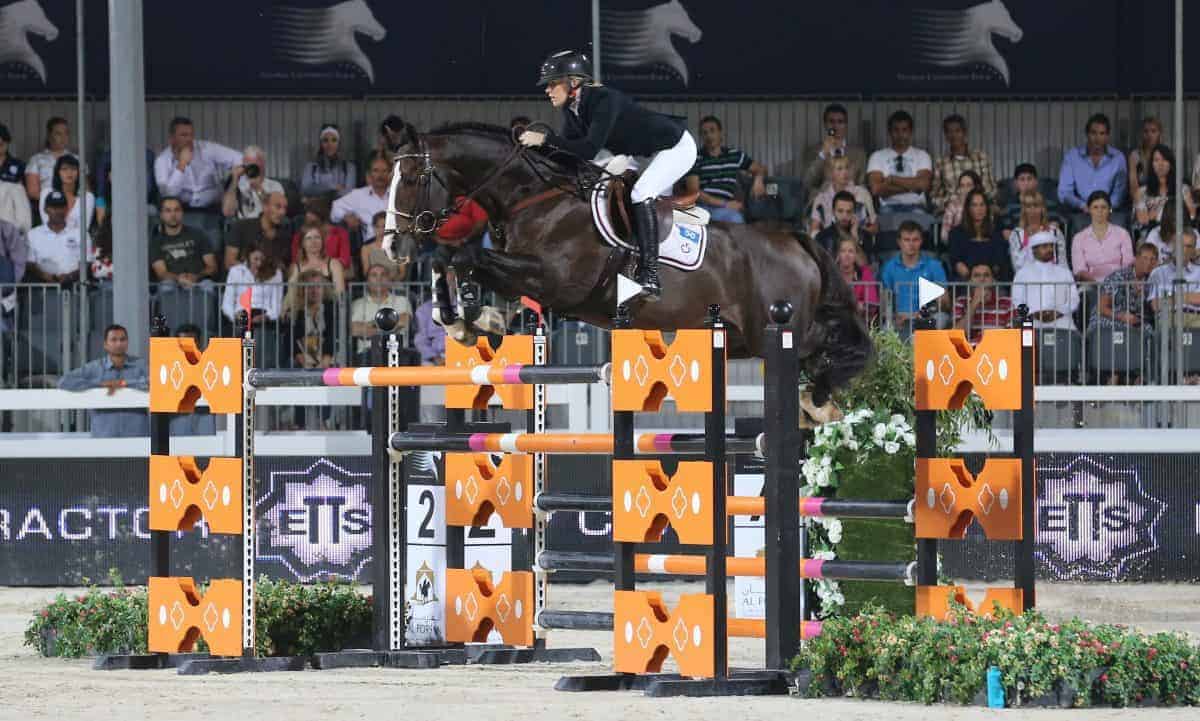My top training exercise: Yazmin Pinchen

We ask leading riders and trainers to name one of their favourite training exercises. Up first is international showjumper and H&C blogger Yazmin Pinchen.
Varying distances
“One of the jumping exercise I practice the most is to place two small jumps, about 60cm in height, five strides apart (approximately 22m) down the long side of the arena. After riding five strides between the fences, I then vary it by shortening the canter so you do six, seven and eight strides in between the jumps, or riding more forward so that you just have four strides in between. The idea is to be able to vary how many strides you get while keeping a a smooth rhythm, which is an essential skill when it comes to riding courses.
What horse does it suit?
This exercise is one I will often do with my more established horses – they have good balance and can shorten and lengthen easily. Of course it’s also suitable for younger horses, but depending on their stage of training it can be more difficult for them to shorten their pace. It’s a case of lots of repetition and plenty of patience, so that you teach the horse to adjust his stride smoothly. With a very novice horse you could do this exercise with poles on the ground, and once you move on to small fences it is probably better to aim for just six strides at first instead of asking him for more – keep to a happy medium that you’re both comfortable with.
Why is it beneficial?
A showjumper must be able to adjust his stride smoothly as soon as you ask, especially when you’re in the ring – perhaps there’s an awkward related distance, or you need to adjust his stride to meet a fence correctly. This ability to adjust the stride only becomes achievable after repetition upon repetition. Try to get that smooth transition between the more forward and more collected canter every time until your horse instantly responds to the aids. Also, remember the transition doesn’t just come from the reins – try raising your hands very slightly, sitting deep in the saddle and, of course, using your core (think of holding in your stomach muscles) and keeping your legs on to teach the horse to take more weight in his hind leg and ‘sit’ more in the canter.
How to ride the exercise
Your horse or pony should be fully warmed-up and have jumped a few small fences before you begin. Then, come to the first fence in an active, rhythmical canter. Maintain a balanced position over the first one, and continue to the second fence in a nice, even rhythm, aiming for five canter strides between the jumps. Once you’ve mastered that, approach in the same canter but as you go over the first jump, think about quickly returning to an upright upper body position, keeping your heels down, the lower leg secue and very slightly raising your hands – this will encourage your horse to shorten his stride to make six strides. Using your voice also helps to slow him down. If you want to take a stride out to make four strides, approach the first jump with a more active pace but be careful to maintain a still and secure body position. Keep varying the amount of strides you do between the two jumps until you can do it perfectly and you and the horse feel confident.
Making it harder
Once you’ve mastered this exercise, do the same thing but with the two fences set up on a ‘dog leg’ (curved line).
Troubleshooting
This exercise won’t be perfect every time but that’s no problem! The good thing is if you make a mistake the jump is only small so neither rider or horse will panic. One of the most common things that can go wrong is for your horse to get unbalanced in the canter – so if this is happening, try working on the flat for a while and practise riding the canter more forward then shortening it on a large circle.
Don’t worry if you end up too close or far away at one of the fences – just come round again, keep a good position with your body and keep the canter as balanced and rhythmical as you can. It is simply about repetition, which helps the horse learn and trains your eye to spot a stride.”
Yazmin






